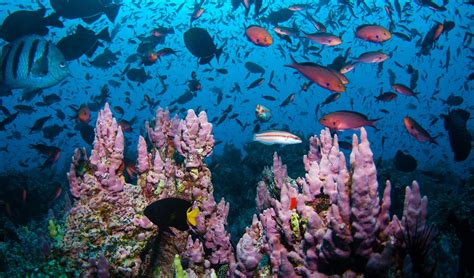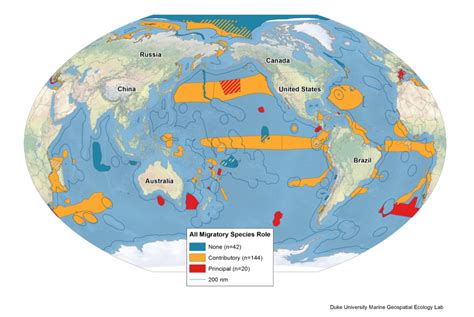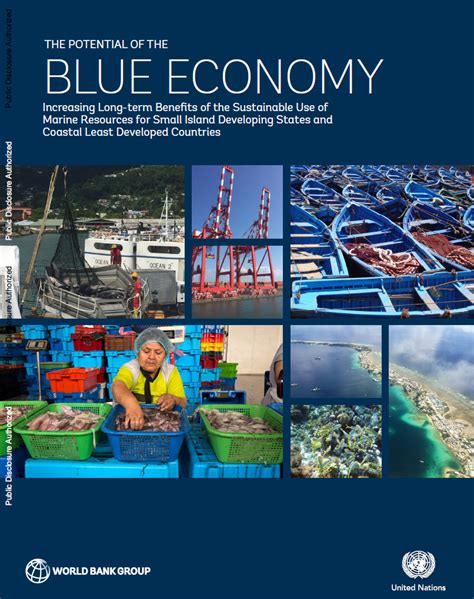In a world where skyscrapers pierce the clouds and concrete jungles dominate the landscape, there exists a realm that bears no boundaries or limitations. It is a realm where the trills of the cascading waves intertwine with the whispers of the wind, creating a symphony of serenity and intrigue. This enchanting realm is none other than the vast expanse of the open sea, a world uncharted and yet brimming with captivating wonders waiting to be discovered.
As you delve deeper into the exploration of these limitless waters, prepare to embark on a journey that will awaken your senses and ignite your imagination. Picture yourself standing on the deck of a ship, gazing out into the horizon as the sun kisses the placid surface, casting a mesmerizing golden glow. The azure brilliance of the water stretches as far as the eye can see, beckoning you to venture forth.
With each passing wave, the sea unravels its secrets, captivating even the most seasoned of adventurers. The depths conceal a world teeming with life, where vibrant coral reefs house a kaleidoscope of flora and fauna. From the majestic dance of dolphins to the graceful glide of sea turtles, nature manifests its splendor in the most extraordinary forms.
Yet, beyond the realm of marine life lies a realm equally intriguing – shipwrecks that bear witness to the passage of time and tell haunting tales of seafaring endeavors gone awry. These relics of the past serve as silent storytellers, recounting the triumphs and tragedies of sailors who once braved the tumultuous seas. Their eroded surfaces are adorned with a fragile beauty, reminiscent of the resilience of the human spirit in the face of adversity.
A Realm Shrouded in Mystery: Uncovering the Enigmatic and Pristine Expanse

Within the vastness of the unfathomable aquatic landscapes lie a realm so enigmatic and untouched, it sparks unimaginable marvel. This realm, concealed beneath the azure surface, holds an allure that beckons explorers and adventurers alike to uncover its secrets, to dive beyond the ordinary, and delve into the unfamiliar depths.
As one ventures into this realm, they are captivated by the myriad of wonders that surround them, from the mesmerizing hues of the underwater flora to the magnificent creatures that call this untamed haven their home. This secluded expanse is a sanctuary for the extraordinary, a sanctuary hidden away from the prying eyes of everyday life.
Traversing through this mystical dimension brings forth encounters with a diverse array of marine life, many of which remain undiscovered and are yet to be named. It is a world where shimmering scales dance with the rhythm of the tides, where bioluminescent organisms illuminate the darkness, and where ancient remnants of lost civilizations lie dormant, waiting to be discovered.
While the surface world busies itself with the chaos of everyday existence, this untouched realm remains an oasis of tranquility, a serene sanctuary where time seems to stand still. It is a reminder of the inexhaustible power and boundless beauty that the Earth possesses, a testament to the infinitesimal nature of human knowledge.
Thus, as we embark on a journey through this uncharted territory, let us bear witness to the allure of the unknown, marvel at the mysteries that lie beneath the waves, and immerse ourselves in the captivating enchantment of this mysterious and untouched realm.
The Significance of the Vast Expanse: Unveiling the Importance of the Endless Waters
In this section, we delve into the pivotal role played by the expansive realm of the open seas. With its vastness stretching far beyond the shores, the high seas hold immense significance for our planet and its inhabitants.
These awe-inspiring waters, teeming with an abundance of diverse life forms, hold the key to preserving ecological balance and supporting the livelihoods of countless communities. Beyond its ecological value, the high seas serve as a vital conduit for global trade, offering a crucial transportation route for goods and resources that sustain economies worldwide.
Moreover, the vast expanse of the high seas serves as a breeding ground for innovation and scientific discovery. Explorers and researchers alike are drawn to these mesmerizing depths, seeking to unlock the mysteries of the ocean and harness its untapped potential for scientific advancement and technological breakthroughs.
However, the significance of the high seas also entails a call for responsible stewardship. As the delicate equilibrium within these waters faces various threats including pollution, overfishing, and climate change, it becomes imperative to recognize the urgency of implementing sustainable practices to safeguard this invaluable resource for present and future generations.
Ultimately, understanding the importance of the high seas not only enriches our knowledge of the world but also paves the way for collective efforts towards protecting and conserving these majestic realms. By embracing the significance of these endless waters, we can forge a path towards a more sustainable future for our planet and all its inhabitants.
Diverse Ecosystems and Marine Biodiversity

The ocean is a vast and dynamic environment that supports a plethora of diverse ecosystems. Within these aquatic realms, a fascinating world of marine biodiversity thrives. From the smallest microorganisms to the largest marine mammals, the ocean houses an incredible range of life forms that have adapted to survive in the harsh and unpredictable conditions of the high seas.
Marine biodiversity encompasses the variety of species, habitats, and ecosystems that exist within the ocean. It is a complex web of interconnected life forms, where each organism plays a specific role in maintaining the delicate balance of the marine ecosystem. The diverse array of species found in the ocean includes fish, crustaceans, mollusks, marine reptiles, marine mammals, and countless others.
These ecosystems support a wide range of interactions and relationships between species. From predator-prey dynamics to symbiotic partnerships, the marine environment is teeming with complex ecological interdependencies. For example, coral reefs provide essential habitat for numerous fish species, offering protection and food sources. In return, the fish help maintain the health of the coral reefs by removing algae and detritus, preventing their overgrowth.
The immense biodiversity found in the ocean is not only fascinating from a scientific perspective but also holds immense value for humans. Many marine species contribute to the economy through fishing and aquaculture industries, while others provide important ecosystem services such as carbon sequestration and nutrient cycling. Additionally, marine biodiversity has immense potential for medicinal discoveries and scientific advancements that can benefit human health.
However, the delicate balance of marine biodiversity is increasingly under threat. Overfishing, habitat destruction, pollution, and climate change pose significant challenges to the sustainability and resilience of marine ecosystems. It is vital for us to recognize the intrinsic value of our oceans and take proactive measures to protect and preserve the diverse ecosystems and marine biodiversity they harbor.
Challenges and Threats to the Vast Expanse of the Deep Sea
The seemingly endless expanse of the high seas is not without its challenges and threats. This article aims to shed light on the various obstacles that the vast ocean faces, as well as the potential dangers lurking beneath its surface.
1. Environmental Pollution
- Pollution from various sources poses a significant threat to the health and ecosystems of the high seas.
- Industrial activities, such as oil spills and chemical waste, have the potential to cause long-term damage to marine life and habitats.
- Plastic pollution continues to be a pressing issue, with vast amounts of plastic waste accumulating in the deep sea, endangering marine species.
2. Overfishing
- The high seas are often an attractive target for large-scale commercial fishing operations, leading to overfishing and depletion of fish stocks.
- Illegal, unreported, and unregulated fishing further exacerbates the problem, putting additional strain on already fragile ecosystems.
- The lack of effective regulations and monitoring makes it difficult to enforce sustainable fishing practices in these remote areas.
3. Climate Change
- The changing climate has a profound impact on the high seas, leading to rising sea temperatures, ocean acidification, and loss of biodiversity.
- These shifts disrupt the delicate balance of marine ecosystems, affecting the survival and distribution of species.
- Rapidly melting ice caps and glaciers contribute to rising sea levels, posing a threat to coastal communities and habitats.
4. Lack of Governance and Enforcement
- The high seas fall outside the jurisdiction of any individual country, resulting in a governance gap that allows for unsustainable practices.
- The absence of comprehensive regulations hinders effective management and conservation efforts.
- Cooperation and coordination among nations are crucial to address the challenges and threats to the high seas.
5. Deep-Sea Mining
- The desire to extract valuable minerals from the deep sea has led to an emerging threat: deep-sea mining.
- This activity poses significant risks to fragile deep-sea habitats, potentially causing irreversible damage.
- The lack of adequate knowledge about deep-sea ecosystems makes it challenging to assess the long-term impacts of mining operations.
The challenges and threats discussed above highlight the need for international collaboration and effective governance to ensure the long-term sustainability and protection of the high seas. Only through concerted efforts can we preserve the fascinating world beneath the surface and continue to marvel at its wonders.
International Efforts to Safeguard and Manage the Vast and Enigmatic High Seas

Efforts on a global scale are being dedicated towards preserving and effectively managing the expansive and captivating realm of the high seas. Multiple nations and organizations recognize the urgency of addressing the unique challenges posed by these deep waters. Collective collaboration and international agreements are crucial to create frameworks that promote responsible utilization and conservation of the high seas for future generations.
The need for international cooperation stems from the recognition that the high seas cover approximately two-thirds of the Earth's surface, constituting a global commons outside the jurisdiction of any single country. The complexities of governing such a vast and diverse area require coordinated efforts to ensure sustainable use of its resources, protection of its fragile ecosystems, and prevention of illicit activities.
One significant step towards protecting the high seas is the ongoing negotiations for a new international legally binding instrument under the United Nations Convention on the Law of the Sea (UNCLOS). The aim of this instrument is to establish a comprehensive framework for the conservation and sustainable use of biodiversity beyond national jurisdiction. These negotiations involve representatives from various nations, NGOs, and other stakeholders, working collectively to develop legal mechanisms that address the intricacies of high seas governance.
In addition to the negotiations for a new instrument, various regional agreements have been established to enhance the protection and management of specific high seas regions. These agreements facilitate the cooperation among neighboring countries to address shared challenges and develop sustainable approaches to resource management. Examples include the Southeast Atlantic Fisheries Organization (SEAFO) and the South Pacific Regional Fisheries Management Organization (SPRFMO), which both focus on promoting sustainable fisheries practices in their respective regions.
Furthermore, the International Maritime Organization (IMO) plays a pivotal role in ensuring safety, security, and environmental protection in the high seas. The IMO establishes and enforces regulations on numerous maritime matters, including vessel pollution, navigation, and maritime search and rescue. Its efforts significantly contribute to mitigating the potential risks and negative impacts associated with human activities in the vast oceanic expanse.
To effectively protect and manage the high seas, it is crucial for nations to cooperate beyond their individual interests and safeguard the common inheritance of all humanity. Encouraging more countries to actively participate in international agreements and strengthening existing frameworks will contribute to the sustainable use and preservation of this awe-inspiring and fragile realm.
New Discoveries and Scientific Breakthroughs
In the realm of the boundless expanse, where the immense body of water stretches far and wide, uncovering novel revelations and groundbreaking achievements has become a quest of utmost significance. Delving into uncharted territories of knowledge and understanding, scientists and researchers continue their relentless pursuit of unveiling the mysteries hidden beneath the vast blue sea.
Through tireless exploration and innovative methodologies, a myriad of unprecedented discoveries has been made, shedding light on the intricate fabric of oceanic ecosystems. These extraordinary findings have opened up a new realm of possibilities, revolutionizing our perception of the marine world and showcasing its mesmerizing complexity.
One such pivotal breakthrough stems from the unravelling of the intricate communication networks that underlie the social structures of various marine species. Scientists have unraveled the hidden codes embedded within the fascinating world of underwater communication, deciphering an array of signals, from acoustic cues to visual displays, and unlocking the secrets of underwater conversations.
Moreover, the revolutionary advancements in technological tools and techniques have propelled the exploration of the high seas into unparalleled heights. With the aid of advanced remote sensing technologies and autonomous underwater vehicles, researchers have gained access to hitherto unreachable depths, capturing astonishing imagery and collecting invaluable data that provides unprecedented insights into the world beneath the surface.
Additionally, the remarkable identification and cataloguing of previously unknown species have ushered in a new era in our understanding of marine biodiversity. Scientists have painstakingly documented and described countless new species, emphasizing the incredible diversity that thrives within the vastness of the ocean. These findings serve as a testament to the wondrous forms of life that exist in the high seas, embodying the boundless wonders that continue to captivate and astound researchers and enthusiasts alike.
As we delve further into the depths of the ocean, propelled by the spirit of curiosity and driven by the desire to uncover its hidden treasures, the realm of new discoveries and scientific breakthroughs unveils a world beyond imagination. Each revelation holds the potential to reshape our understanding of the ocean, inspiring us to safeguard and preserve this mesmerizing world for future generations to fathom and admire.
The Potential for Sustainable Utilization of Marine Resources

Exploiting the bountiful offerings of the vast ocean provides a significant opportunity for sustainable development and resource management. With the abundance of marine resources that our planet's waters hold, it is crucial to explore ways to harness these resources in an environmentally friendly manner while ensuring their long-term availability for future generations.
The potential for sustainable utilization of marine resources lies in the careful balance between meeting the needs of human populations and protecting the delicate ecosystems that thrive beneath the ocean's surface. By adopting innovative and responsible practices, we can tap into the vast potential of the high seas without depleting crucial marine biodiversity or disrupting the delicate equilibrium that exists within our oceans.
Efforts to sustainably exploit marine resources encompass a wide range of activities, including responsible fishing practices, aquaculture, and the extraction of valuable minerals and energy sources. By implementing strict regulations and monitoring systems, we can mitigate the negative impacts associated with these activities, such as overfishing or habitat destruction, while still reaping the benefits these resources have to offer.
Furthermore, sustainable exploitation requires the integration of scientific research, policy development, and international cooperation. By promoting knowledge sharing and collaboration, we can better understand the complexities of marine ecosystems and develop effective strategies to safeguard their resources for future generations. This approach also ensures that the benefits derived from the exploitation of marine resources are shared equitably and sustainably among countries and communities worldwide.
In conclusion, the potential for sustainable utilization of marine resources is immense, offering a path towards responsible economic growth and environmental conservation. By embracing innovative technologies, promoting responsible practices, and fostering global cooperation, we can tap into the vast wealth of our oceans while preserving their beauty and diversity for generations to come.
Our Responsibility to Preserve the Vastness of the Majestic Sea for Generations to Come
In this section, we delve into the crucial importance and collective duty we have in safeguarding the immense beauty and rich biodiversity that exists within the expansive realm of the high seas. Our actions today will shape the opportunities and resources available to future generations, making it imperative for us to act as responsible custodians of this vast aquatic expanse.
The High Seas: A Global Heritage
The high seas, also referred to as the open ocean or international waters, encompass vast areas of the world's oceans that lie beyond the jurisdiction of any single nation. These unclaimed waters are considered a shared global heritage, holding immense ecological and scientific value. By preserving their health and integrity, we not only protect marine life and ecosystems but also ensure equitable access to resources for all nations.
Ecosystem Preservation and Balance
Within the rich tapestry of the high seas, diverse ecosystems thrive, exhibiting intricate interdependencies among species and habitats. From the mesmerizing coral reefs to the awe-inspiring migrations of marine mammals, these ecosystems provide crucial services such as carbon sequestration, climate regulation, and the replenishment of fish stocks. It is our responsibility to safeguard this delicate balance, protecting the biodiversity that sustains life both below and above the surface of the sea.
The Threat of Unsustainable Exploitation
Despite its immense significance, the high seas face numerous threats from human activities such as overfishing, pollution, and climate change. Overexploitation of fish stocks, for instance, not only disrupts marine ecosystems but also undermines the livelihoods of millions of people who depend on these resources for sustenance and income. Additionally, the continuous discharge of pollutants and the accumulation of plastic waste pose serious risks to the health of marine life and the overall integrity of this vast aquatic environment.
Collective Action and Sustainable Solutions
Preserving the high seas for future generations requires global cooperation and the implementation of sustainable practices. International agreements and initiatives, such as the United Nations Convention on the Law of the Sea and the efforts towards establishing marine protected areas, play a vital role in safeguarding these waters. Through collaborative research, responsible fishing practices, and innovative conservation strategies, we can foster a sustainable future where the high seas continue to thrive, providing invaluable environmental, economic, and cultural benefits.
An Everlasting Legacy
As custodians of the high seas, we have the power to shape the legacy we leave for generations to come. By recognizing our responsibility to preserve and protect this vast oceanic expanse, we can ensure a bountiful and vibrant marine world that will continue to inspire awe and fascination in the hearts of future explorers. Let us embrace this responsibility and work together to safeguard the high seas for the benefit of all.
FAQ
Why are the high seas so fascinating?
The high seas are fascinating because of their immense size and the mysteries they hold. These vast expanses of ocean offer a sense of exploration and adventure, with the potential to discover new marine species and uncover hidden underwater landscapes.
What are some of the challenges of exploring the high seas?
Exploring the high seas comes with several challenges. One major difficulty is the sheer size of the oceans, which makes navigation and search operations complex. Additionally, extreme weather conditions, such as storms and rough seas, can pose risks for exploration vessels. Finally, the lack of sunlight and high pressure in deep-sea areas create harsh environments for humans and equipment.
Are there any benefits to exploring the high seas?
Yes, there are numerous benefits to exploring the high seas. By studying these vast oceans, scientists can gain insights into the Earth's climate patterns and the impact of human activities on marine ecosystems. Exploration also provides opportunities for discovering new resources, such as valuable minerals or potential sources of renewable energy.
What is the role of international cooperation in exploring the high seas?
International cooperation plays a crucial role in exploring the high seas. Since the high seas are beyond the jurisdiction of any single country, collaboration between nations is necessary to ensure effective exploration and sustainable management of marine resources. This cooperation involves sharing scientific data, establishing regulations, and coordinating efforts to protect the delicate balance of the high seas.



